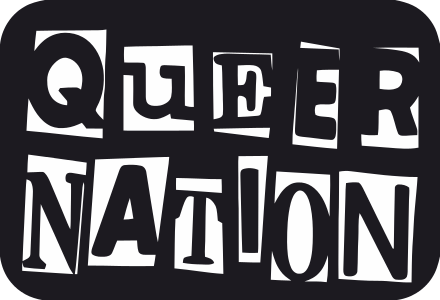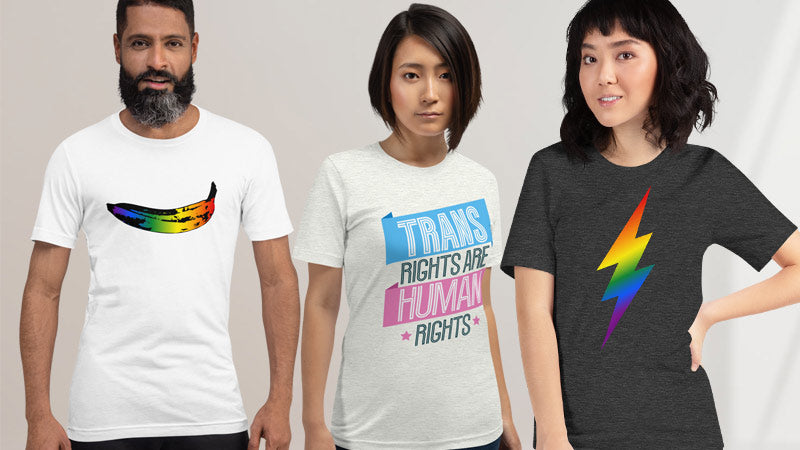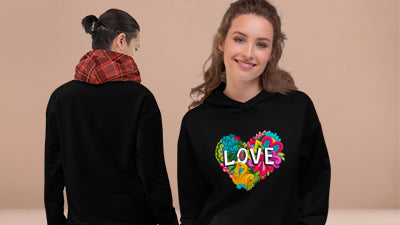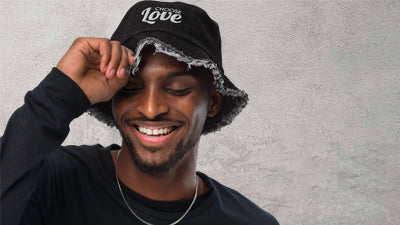Christopher Street Gay Liberation Day, The Story Of The First Pride

On the morning of Sunday June 28th 1970 a large crowd began to assemble in the West Village area of Manhattan. The group was a mix of men, women, drag queens and trans people, and there was an excited atmosphere. But there was also nervous energy as they began holding up placards and unfurling huge banners and flags.
They’d come from every conceivable social class, and all ages. Activists, agitators, the disenfranchised and displaced, who’d been thrown out of their homes in small towns across America by homophobic parents and found their way to New York. They were people who lived in a society extremely hostile to homosexuality and wanted their voices heard.
They had come to protest. To demonstrate against the treatment of gay men and lesbians by the city authorities and the federal government. To make it clear that they would not tolerate being oppressed any longer and to demand their liberation.
Just over a year previously the idea of a march like this would have been pure fantasy.
Gay Rights In 1960s America
It’s important to paint a picture of how appalling rights for gay, lesbian, bisexual and transgender people were in 1960s America. Homosexuality had been illegal since the days of British colonial rule in the 17th Century. In 1962 Illinois had decriminalised homosexuality between consenting but in every other state it was a Felony, punishable by a lengthy prison sentence or hard labour.
Most people who were gay or transgender were either forced into secrecy or into gay ghettos. Occasionally these were thriving neighbourhoods, but still laws were restrictive. In New York laws prevented gay men and women being served alcohol in public to stop them gathering. In many bars the bartenders simply refused to serve people they suspected of being gay.
A few bars existed that were unofficially queer hangouts, but as queer people were legally banned from owning and running bars, almost all of the gay bars that did exist were unlicensed, illegal and mafia run.
Gay men and women were regularly targeted by police, subjected to harassment and persecution, and beatings were commonplace. In many cities groups of vigilantes often beat any gay men they found. Sometimes the beatings became murders.
Despite large bribes being paid by the bar owners, the police had to be seen to be doing their duty, so these places were regularly raided. Police would round up and arrest a few people each time, taking names and addresses. Names were regularly leaked to parents or employers, which could destroy someone’s career and life. The mafia owners were usually tipped off in advance to ensure they weren’t on the premises.
Discrimination was an everyday thing. Many gay people just felt powerless. They had no power, representation or voice whatsoever. Yes there had been some flashpoints of resistance, but these were rare.
The Mattachine Society, a group made up of gay men, was the only one that lobbied for any rights for gay people and the Sisters Of Bilitis did the same for lesbians. Both were more interested in appeasement than equality,
Then on one hot June evening in New York’s West Village everything changed.
FIND THINGS TO WEAR AT PRIDE view the full collection
The Stonewall Uprising
Some say it was riot, some a rebellion. Some, like Miss Major, say it was an uprising. Either way, the events of the night of 27/28 June 1969 and the few days that followed were historic. For the first time in history thousands of queer people went out onto the streets to fight back against the city authorities, to say they’d had enough of the intolerable laws and restrictions placed on them. It was a turning point.
It’s surprising to us now to hear so many participants of The Stonewall Riots later say it didn’t feel like it was anything other than a few nights of resistance. They didn’t think it would change anything. But for others it absolutely did.
While in itself it may have been a relatively small event, there were some, such as Craig Rodwell, for whom it represented an opportunity. A moment that must be grasped, a catalyst that could be used to motivate and galvanise the community that was so fragmented into small groups and societies.
Craig Rodwell - The Driving Force

Rodwell was a radical at a time when most of the gay community was urging caution. He’d long been an activist and in 1962 had dated Harvey Milk, who would go on to become the first openly gay elected official in California.
By July ‘69 Rodwell had opened The Oscar Wilde Memorial Bookshop and become a central figure in the New York office of the Mattachine Society. He was living at 350 Bleecker Street, not far from the Stonewall Inn, and had been on his way home when things started to kick off that night. It was he who had gone to call the newspapers and drum up some more support. He had also printed and distributed 5000 flyers around the city denouncing the close relationship between the mafia and the police, and calling for them both to be removed from New York’s gay bars.
He was also an organiser of the annual Fourth of July Reminder Day picket in front of Independence Hall in Philadelphia. These were regimented and formal affairs, with everyone in suits and no displays of affection, and had been set up to be a reminder that the gay and lesbian community lacked basic civil rights.
The last of these had been the day after the last night of rioting at Stonewall. The usual formal attire and orderly rules were broken and it was clear that Stonewall had already changed things. There was certainly a feeling among the younger contingent that pickets were no longer effective. So Rodwell was well placed to make things happen.
In the months after Stonewall he saw first hand the defiant energy within the community, and was determined that the momentum wasn’t lost. So he began to gather a group of people to discuss what they could do.
The Gay Liberation Front
The other immediate outcome of Stonewall was the birth of an organisation that would take the demands for liberation to a whole new level. The Gay Liberation Front was radical and militant in its outlook, its members demanded gay liberation rather than tolerance, they were anti-capitalist, anti-racist and denounced traditional gender roles.
It was the GLF that sparked the first big protest after Stonewall. On 12th September 500 people marched from Washington Square Park to Sheridan Sq. in West Village to protest the Village Voice newspaper, which had been judged to have been dismissive of the Stonewall Riots. Now the GLF wanted to protest the bigotry they saw in its descriptions of gay people, and its censorship of gay advertising.The crowd that turned up proved there was still an appetite for protest.
Shortly after that the first edition of their newspaper COME OUT! Was published, making it clear that gay people are no longer content merely to be tolerated, with the front page leader. POWER TO THE PEOPLE! GAY POWER TO GAY PEOPLE! COME OUT OF THE CLOSET BEFORE THE DOOR IS NAILED SHUT!"

The Birth Of Pride
In October, members of the GLF, Ellen Broidy, Linda Rhodes and activist Foster Gunnison, Jr met with Rodwell at his apartment to discuss an event to replace the Annual Reminder Days. It’s been suggested that lesbian Martha Shelley, one of the GFL founders who would later go on to form The Lavender Menace, was the first to propose the idea of a march to commemorate The Riots.
Rodwell spent the following month lobbying different groups in the background, and at the meeting of the Eastern Regional Conference of Homophile Organizations (ERCHO) in Philadelphia on November 2nd Rodwell, Broidy and Rhodes proposed a resolution. It read:
We propose that a demonstration be held annually on the last Saturday in June in New York City to commemorate the 1969 spontaneous demonstrations on Christopher Street and this demonstration be called CHRISTOPHER STREET LIBERATION DAY. No dress or age regulations shall be made for this demonstration. We also propose that we contact Homophile organisations throughout the country and suggest that they hold parallel demonstrations on that day. We propose a nationwide show of support.
The resolution was passed. The Mattachine Society abstained but all other organisations voted in favour. By January the core group of Rodwell, Broidy, Rhodes, Sargent, Gunnison plus Michael Brown, Marty Nixon and Brenda Howard were starting to make plans for the march.
The first job was to get funding, and Gunnison was nominated to approach the national homophile organisations and Sargent used the Oscar Wilde Memorial Bookshop mailing list.
It was thought that more people were likely to attend on a Sunday, and as they wanted to mark the anniversary of The Stonewall Riot, it was agreed that the march would be on Sunday 28th June 1970 and it would be called Christopher Street Gay Liberation Day.

The Christopher Street Gay Liberation Day March

The march was due to begin at about noon, but as people awoke that morning they still had no permit to do it and there was some nervousness within the organisers group. At about 10am it was finally issued. But there were still a lot of questions about how they would be treated by police and what reception the people of New York would give them.
Mark Segal was a GLF member and a marshal of the event. “No one knew exactly what would happen,” he said. “No one knew the type of force that might greet us. So we held self-defence classes and learned how to protect ourselves. As a marshal, I especially had to know how to react and control the marchers if we were attacked.”
The assembly point was in Washington Place, between Sheridan Square and Sixth Avenue in West Village and slowly about 200 people appeared from the various organisations that had been involved in the planning of the event. It was chaotic. They set off around noon, with the plan to progress the 51 blocks up to The Sheep Meadow in Central Park. Where a Gay-In would take place.
As they set off they found crowds lining the route. Many were there out of curiosity, and although some were very hostile, the atmosphere was generally good natured. It was clear that many gays and lesbians had been nervous about how it would go and had decided to watch and wait.
But once they realised it was safe they simply stepped off the pavement and joined the march. At its height it extended for 15 blocks and by the time they reached Sheep Meadow there were over 10,000 people.


“When we reached 23rd Street, I climbed up a pole, looked back and saw a crowd stretch all the way to Christopher Street.” said Segal. “Eventually we made it to Central Park, just like we had promised, and us activists transformed a movement from a few ragtag militants to a thousand strong. As my friend Jerry Hoose used to say about that year, ‘we went from the shadows to sunlight’.”
The march has become a celebration, with joyful chants of “gay power”, “we’re gay and proud,” and “out of the closet and into the streets”. Historian Lillian Faderman later commented, “Never in history had so many gay and lesbian people come together in one place and for a common endeavour.”

It took half the expected time to reach Central park. Partly because of excitement and partly because of some nervousness on the part of the marchers. When they arrived everyone relaxed and enjoyed the sunshine, and the freedom to show affection in public. Even if it was for just that day. But for that afternoon they danced and kissed and held each other.
It had been a huge success. Parallel marches were held in Chicago, San Francisco and LA, although that one met with significantly more obstacles than NY. And its success encouraged the organisers to make it an annual event. In 1971 Boston, Dallas and Milwaukee also held marches. And Internationally in London, West Berlin, Paris and Stockholm. Christopher Street Gay Liberation Day enshrined the significance of The Stonewall Riots in LGBT history. Eventually the point moved on from liberation to pride. And so the Pride movement was born.












